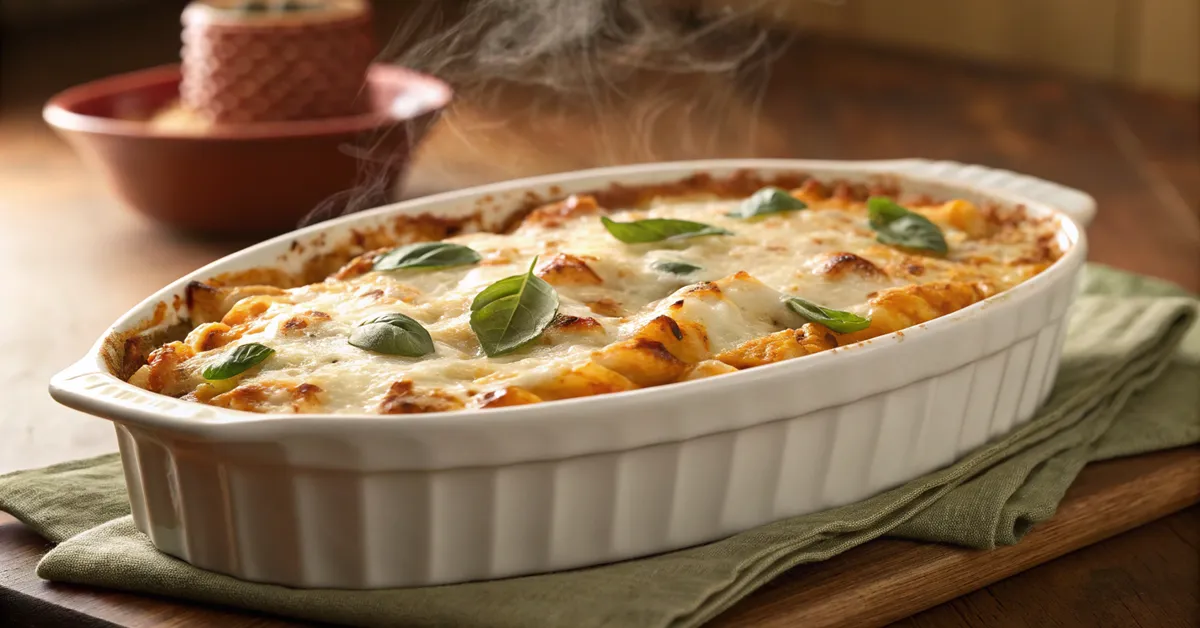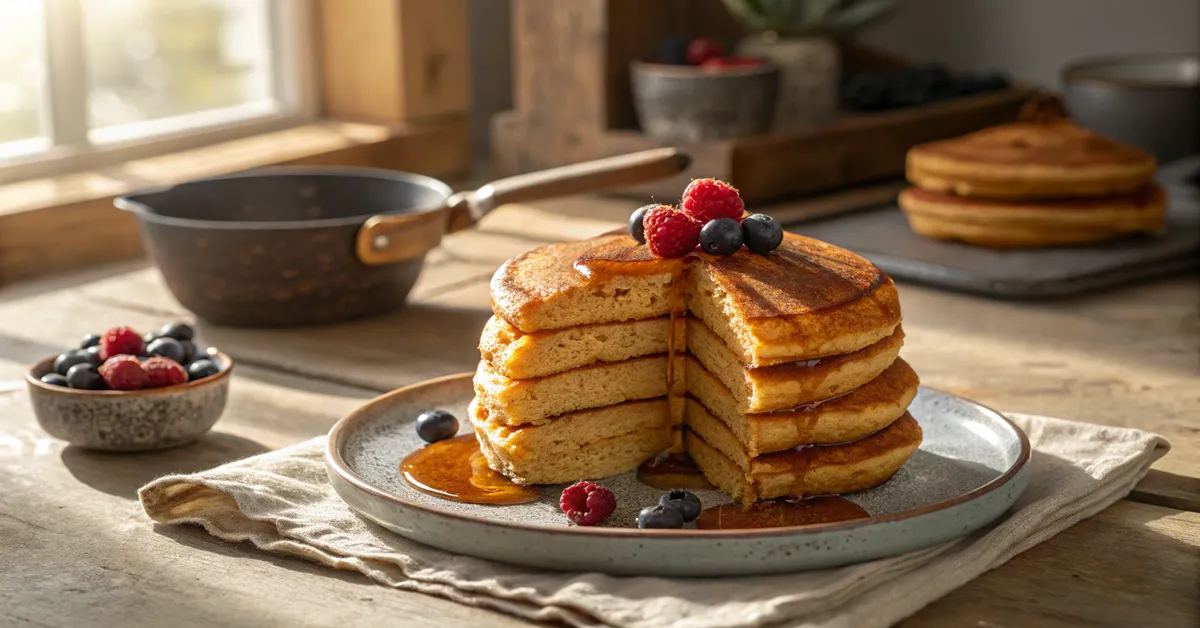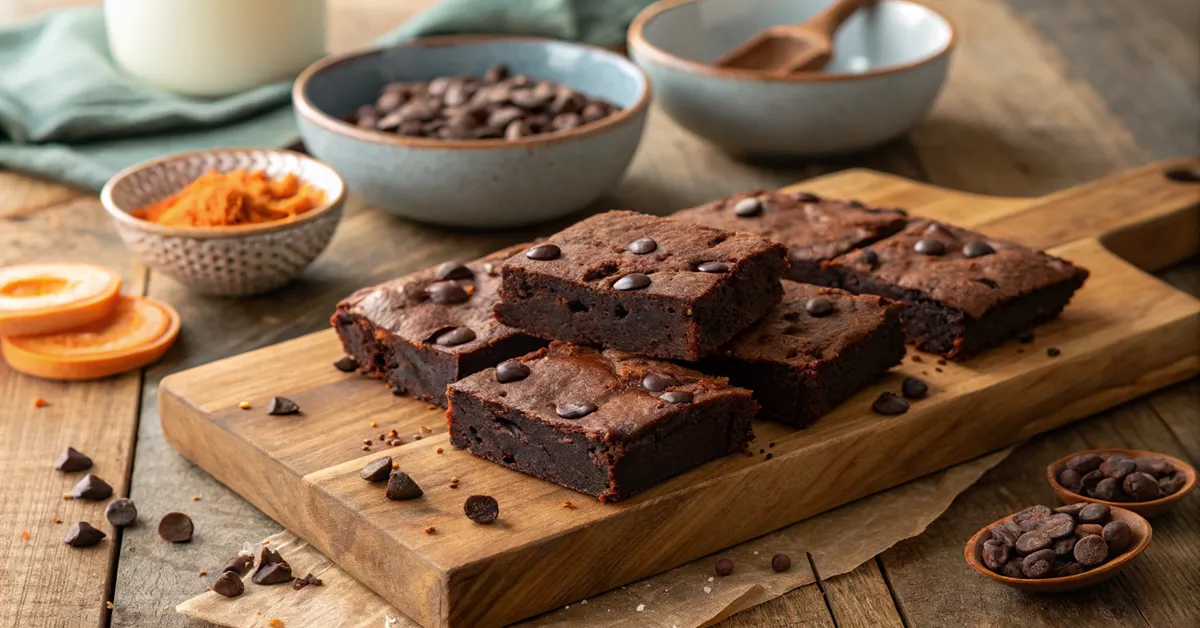My Love Affair with Baked Rigatoni (And How I Almost Gave Up)
Last Tuesday, my neighbor knocked on my door at 6 PM asking if I had any dinner ideas. Her kids were cranky, she’d been in back-to-back Zoom calls all day, and frankly, she looked like she was about to cry. I handed her my baked rigatoni recipe scribbled on a Post-it note.
Two hours later, she texted me a photo of her family around the dinner table, everyone actually smiling. “What kind of magic is this?” she wrote.
Here’s the thing—I almost never shared that recipe. Five years ago, I was convinced I’d never master baked rigatoni. Every attempt ended in disappointment. Too dry, too soggy, burnt on top, raw in the middle. I was ready to accept that some people just aren’t pasta casserole people.
Then my Italian coworker Maria (who emigrated from Naples in the ’80s) watched me struggle through another failed attempt at our office potluck. She pulled me aside and said something that changed everything: “You’re thinking too hard. It’s just pasta that wants to be happy.”
Table of Contents
Table of Contents
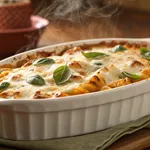
Baked Rigatoni
- Total Time: 1 hour 5 minutes
- Yield: 8 servings
- Diet: Vegetarian
Description
A comforting baked rigatoni dish with tender pasta tubes, creamy ricotta, and golden melted cheese—perfect for family dinners or meal prep.
Ingredients
1 pound rigatoni pasta
3 cups marinara sauce
15 oz ricotta cheese
8 oz fresh mozzarella, torn into chunks
1 cup Parmesan cheese, freshly grated
2 large eggs
3 cloves garlic, minced
1/4 cup fresh basil leaves
2 tablespoons olive oil
Salt and freshly ground pepper
Instructions
- Preheat oven to 375°F and butter a 9×13 inch baking dish
- Cook rigatoni 2 minutes less than package directions
- Mix ricotta, eggs, half the Parmesan, garlic, salt, and pepper
- Toss drained pasta with marinara, then fold in ricotta mixture
- Layer half pasta in dish, add half mozzarella, repeat layers
- Cover and bake 25 minutes, uncover and bake 15-20 minutes until golden
Notes
- Undercook pasta by 2 minutes before baking.
- Can be assembled ahead and refrigerated.
- Add 10 minutes to baking time if starting cold.
- Use freshly shredded cheese for best melting.
- Prep Time: 20 minutes
- Cook Time: 45 minutes
- Category: Mediterranean Dinner Recipes
- Method: Baking
- Cuisine: Mediterranean/Italian
Nutrition
- Serving Size: 1 cup
- Calories: 485 kcal
- Sugar: 8g
- Sodium: 890mg
- Fat: 18g
- Saturated Fat: 10g
- Unsaturated Fat: 6g
- Trans Fat: 0 g
- Carbohydrates: 52g
- Fiber: 3g
- Protein: 24g
- Cholesterol: 85mg
Understanding What Makes Rigatoni Special
The Architecture of Perfect Pasta
You know what’s fascinating about rigatoni pasta? Those ridges aren’t decorative—they’re functional. I learned this during a conversation with Chef Giuseppe at that little Italian place downtown (the one that always has a line). He explained that rigatoni was designed for holding onto sauce, unlike smooth pasta that lets everything slide off.
When you’re making a baked rigatoni recipe, you’re essentially creating a pasta ecosystem. Each tube becomes a tiny vessel that captures sauce, cheese, and seasonings. This baked rigatoni technique transforms ordinary ingredients into something special. The ridges grab onto melted cheese like Velcro. It’s genius, really.
Additionally, the hollow center does something magical during baking—it allows heat to circulate through the pasta, cooking it evenly while creating those perfect little pockets of molten cheese. Have you ever wondered why mezze rigatoni (the shorter version) works even better for baking? Less surface area means more concentrated flavor in each bite.
The Moisture Mystery I Finally Solved
This brings to mind my biggest breakthrough moment. I was watching my grandmother’s old cooking videos (yes, my family filmed Nonna cooking in the ’90s), and I noticed something crucial. She never fully cooked her pasta before assembling the dish.
“Half-cooked pasta,” she said in her thick accent, “finishes cooking with the sauce. They become friends in the oven.”
That’s when it clicked. Baked rigatoni isn’t just reheating cooked pasta—it’s completing the cooking process while building flavor layers. The beauty of baked rigatoni lies in this integration of cooking methods.
| Cooking Stage | What Happens | Why It Matters |
| Stovetop (8 minutes) | Pasta becomes tender outside | Creates base texture |
| Oven assembly | Pasta absorbs sauce flavors | Builds integrated taste |
| Covered baking (25 min) | Interior finishes cooking | Ensures even doneness |
| Uncovered baking (15 min) | Top develops golden crust | Creates textural contrast |
Ingredients List
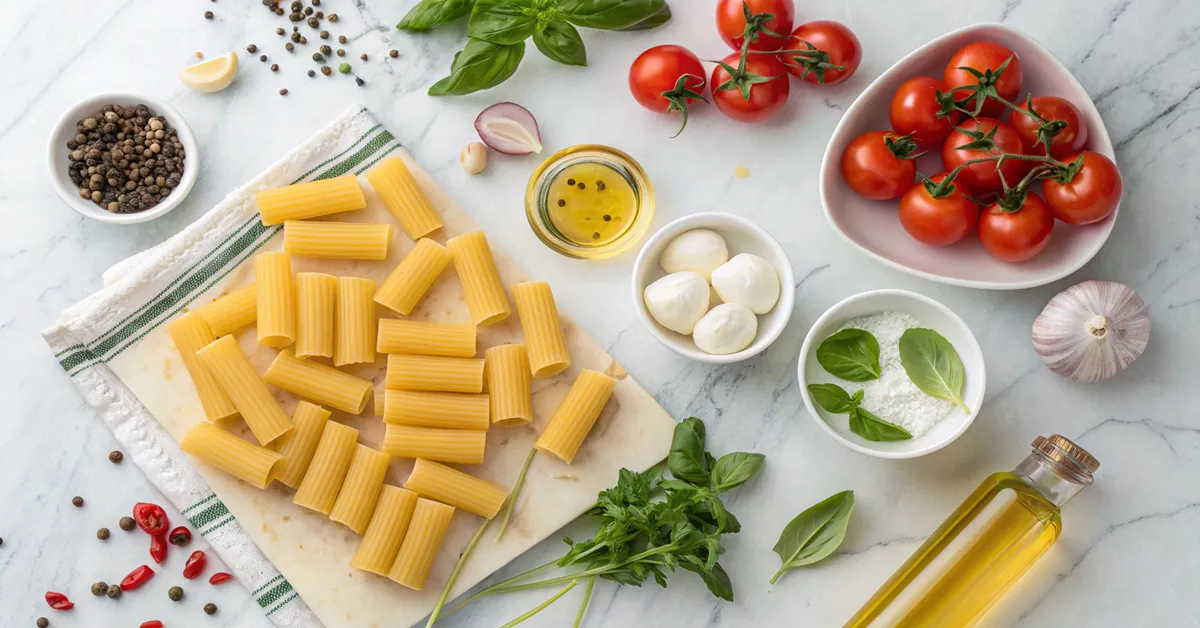
Building Your Flavor Foundation
Here’s what you need for baked rigatoni that actually delivers:
The Essential Players:
- 1 pound rigatoni pasta (I swear by Barilla—it holds its shape)
- 3 cups good marinara sauce (homemade or high-quality jarred)
- 15 oz whole milk ricotta cheese
- 8 oz fresh mozzarella, torn into chunks
- 1 cup Parmesan cheese, freshly grated
- 2 large eggs
- 3 cloves garlic, minced
- 1/4 cup fresh basil leaves
- 2 tablespoons olive oil
- Salt and freshly ground pepper
The Game-Changers (Optional but Recommended):
- 1/2 teaspoon red pepper flakes (inspired by Carbone spicy rigatoni recipe)
- 1 tablespoon tomato paste (for depth)
- 1/4 cup low-sodium chicken broth (trust me on this)
A Word About Cheese Quality
I used to buy pre-shredded mozzarella because it was convenient. Then Maria told me something that changed my cheese game forever: “Those little white powders on pre-shredded cheese? They stop melting smooth.” She was talking about anti-caking agents, and she was absolutely right.
Now I buy a block of low-moisture mozzarella and shred it myself. It takes five extra minutes but creates this beautiful, stretchy cheese pull that makes rigatoni pasta bake Instagram-worthy (not that we’re cooking for social media, but it doesn’t hurt). This attention to detail elevates any baked rigatoni from good to exceptional.
Step-by-Step Instructions
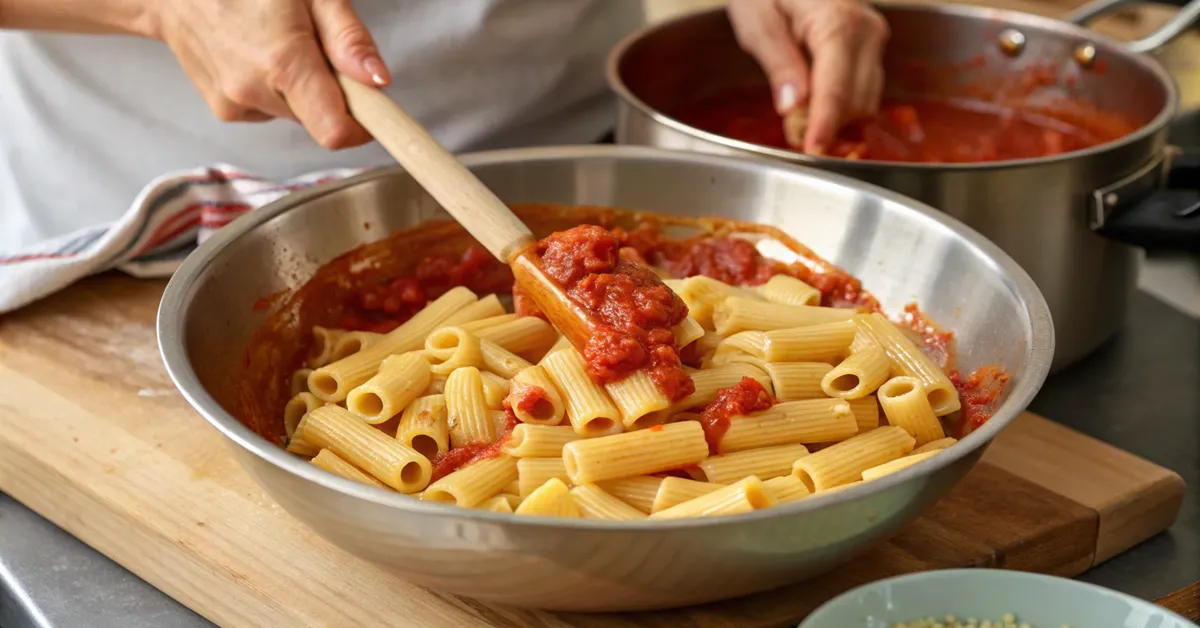
Getting Started Right
Preparation Phase Preheat your oven to 375°F. I know some recipes say 350°F, but after years of testing, 375°F gives you that perfect balance of bubbling cheese and properly cooked pasta. Butter a 9×13 inch baking dish—the butter adds flavor that oil just can’t match.
The Pasta Foundation Bring a large pot of water to boil and salt it generously. I mean really salt it—it should taste like the ocean. This is your only chance to season the pasta itself, so don’t be shy.
Add the rigatoni and cook for exactly 2 minutes less than the package directions. Set a timer. This isn’t the time to wing it.
The Assembly Dance
Creating the Ricotta Mixture
While the pasta cooks, whisk together ricotta, eggs, half the Parmesan, minced garlic, and a good pinch of salt and pepper. This mixture is what transforms ordinary baked rigatoni into something special—it creates creamy pockets throughout the dish. Every great baked rigatoni recipe depends on getting this mixture right.
Pro tip from my disaster days: make sure your ricotta is at room temperature. Cold ricotta doesn’t mix smoothly, and you’ll end up with lumps that never quite disappear.
The Critical Moment
Drain the pasta (don’t rinse it—you need that starch) and immediately toss it with the marinara sauce. The hot pasta helps the sauce penetrate the ridges. Then gently fold in the ricotta mixture.
Here’s where patience pays off. Fold gently with a large spoon, turning the mixture rather than stirring aggressively. You want to coat every piece without breaking the pasta tubes.
Assembly and Baking
Transfer half the pasta mixture to your prepared dish. Sprinkle with half the mozzarella chunks. Add the remaining pasta, then top with the rest of the mozzarella and Parmesan.
Cover tightly with foil and bake for 25 minutes. Remove the foil and bake another 15-20 minutes until the top is golden and bubbling around the edges.
The visual cue you’re looking for? Golden brown spots on the cheese and sauce bubbling enthusiastically around the perimeter.
Customization & Variations
Lessons from My Experimental Phase
Remember how I mentioned almost giving up on baked rigatoni? Well, my comeback involved a lot of experimentation. Some worked brilliantly, others… let’s just say my family ate a lot of pizza during that period. But these failures taught me what makes baked rigatoni truly special.
The Meat Lover’s Discovery: Adding Italian sausage transformed this dish completely. Remove the casings, brown the meat with some fennel seeds, and mix it in with the pasta. The rendered fat adds incredible flavor, and the fennel echoes traditional Italian flavors.
My Carbonara-Inspired Version:This variation came from a happy accident. I had leftover pancetta from making rigatoni carbonara the night before, so I crisped it up and folded it into the ricotta mixture. The smokiness was incredible, and now it’s my go-to for special occasions.
The Vegetable Integration: Roasted vegetables work beautifully here, but timing is everything. Roast zucchini, bell peppers, or eggplant until they’re just tender, then fold them in during assembly. They’ll finish cooking in the oven without becoming mushy.
Current Cultural Moment
With everyone talking about comfort food during uncertain times, baked rigatoni hits all the right notes. It’s economical, feeds a crowd, and tastes like a warm hug. Plus, it’s one of those dishes that actually improves with age—day-two baked rigatoni leftovers are legendary in my house.
This brings to mind something Anthony Bourdain once wrote about pasta: “It’s not about perfection; it’s about understanding.” He was talking about simple ingredients working together harmoniously, which is exactly what happens in a great rigatoni pomodoro or baked dish.
Storage & Meal Prep Tips
The Time-Traveler’s Secret
Here’s something I discovered by accident: baked rigatoni is actually better the next day. The flavors meld overnight, and the pasta absorbs more sauce character. It’s like the dish continues cooking in the refrigerator (science might disagree, but my taste buds don’t lie).
Storage Guidelines:
- Refrigerate up to 4 days (peak flavor at day 2)
- Freeze up to 3 months (portion it first for easier reheating)
- Room temperature maximum 2 hours (food safety first)
Reheating Without Tears
I’ve tried every reheating method imaginable. The oven wins for texture, but here’s my secret: add a tablespoon of water or extra sauce before reheating. Cover with foil, heat at 350°F for about 20 minutes, then uncover for the last 5 minutes to re-crisp the top.
For microwave reheating (we’ve all been there), use 50% power and cover with a damp paper towel. It’s not perfect, but it beats sad, cold pasta.
| Reheating Method | Time | Result Quality |
| Oven (covered) | 20-25 minutes | Excellent – maintains texture |
| Microwave (50% power) | 2-3 minutes | Good – quick but slightly soft |
| Stovetop (with splash of water) | 5-7 minutes | Very good – needs attention |
FAQ Section
What is the difference between baked ziti and baked rigatoni?
Great question—I get this at every potluck I attend. The main difference is pasta shape and size. Baked rigatoni uses larger, ridged tubes that hold more sauce and cheese, creating a heartier bite. Ziti is smaller and smoother, making it more delicate but less substantial. Think of rigatoni as ziti’s robust older brother.
What temperature do you bake rigatoni?
After burning more tops than I care to admit, I’ve settled on 375°F as the sweet spot. It’s hot enough to create that beautiful golden crust but not so hot that the cheese burns before the interior heats through. Some recipes suggest 350°F, but I find that doesn’t develop enough surface color.
How long to heat up rigatoni in the oven?
For leftover baked rigatoni, I recommend 350°F for 20 minutes (covered) if it’s been refrigerated. If frozen, bump that up to 45 minutes. Always remove the foil for the last 5 minutes—that step transforms “reheated pasta” into “intentionally delicious dinner.”
Do I have to boil pasta before baking?
Absolutely yes. I’ve seen recipes claiming you can bake dry pasta directly, but in my experience, this leads to uneven cooking and requires so much liquid that you lose control over the final texture. Partially cooking the pasta first gives you consistent, predictable results.
How long do you bake pasta in the oven?
Total oven time for baked rigatoni should be 40-45 minutes: 25 minutes covered (to steam and finish cooking), then 15-20 minutes uncovered (to brown and set the cheese). Don’t rush this—proper baking time is what separates good pasta bake from great pasta bake.
Can you put dry pasta in pasta bake?
While technically possible, I don’t recommend it. Dry pasta needs precise liquid ratios and timing that are difficult to control in a baked dish. Plus, you miss the opportunity to properly season the pasta water, which is fundamental to good pasta cooking.
Rigatoni vs penne?
This comes up a lot in my cooking classes. While both are tube pastas, rigatoni is significantly larger with deeper ridges and straight-cut ends, whereas penne is smaller with diagonal cuts and lighter ridging. For baked rigatoni, the larger tubes and pronounced ridges are crucial—they hold more filling and create better texture contrast. Penne works fine for stovetop dishes, but rigatoni is the champion of baked pasta dishes because those tubes become little vessels of cheesy goodness.
Nutrition Information
Let’s be honest about what we’re dealing with here—this isn’t health food, and that’s perfectly okay. Sometimes comfort trumps calories.
Per Serving (8 generous servings):
| Nutrient | Amount | % Daily Value |
| Calories | 485 | 24% |
| Protein | 24g | 48% |
| Carbohydrates | 52g | 17% |
| Total Fat | 18g | 23% |
| Saturated Fat | 10g | 50% |
| Fiber | 3g | 11% |
| Sodium | 890mg | 39% |
| Sugar | 8g | — |
| Cholesterol | 85mg | 28% |
Final Thoughts/Conclusion
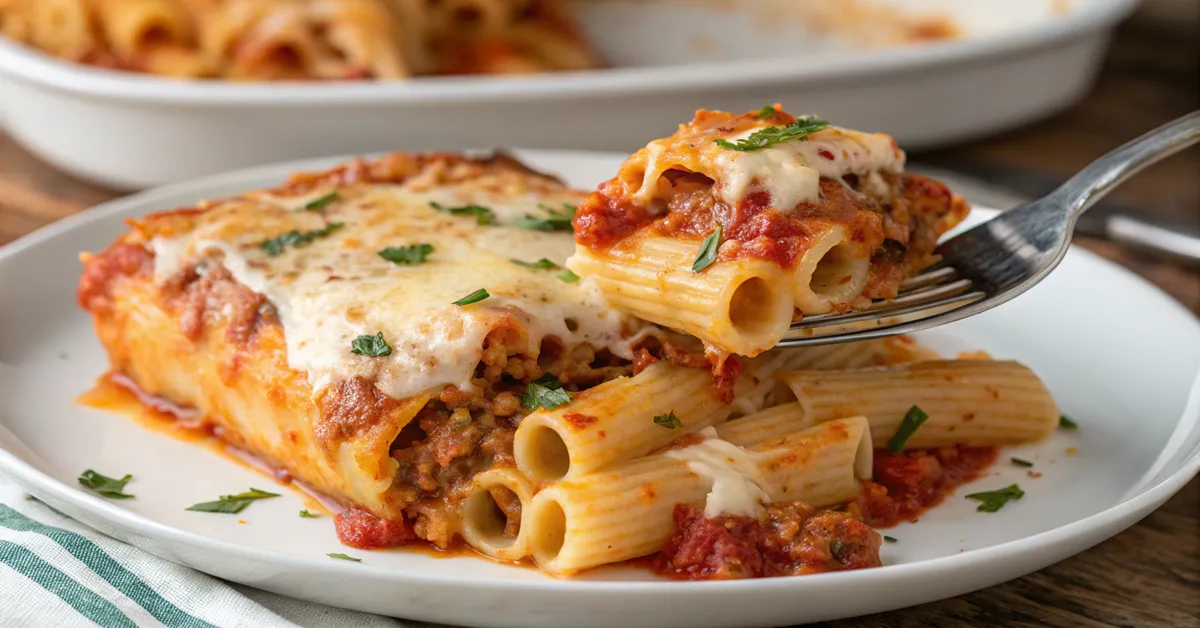
You know what I realized while writing this? Baked rigatoni taught me more about cooking than any fancy technique ever could. It’s about understanding how ingredients behave together, respecting the process, and accepting that sometimes the simplest dishes require the most patience.
The dish I make now bears little resemblance to those early disasters. Not because I’ve added exotic ingredients or complicated techniques, but because I finally stopped fighting the process and started working with it.
What strikes me most is how this humble combination of pasta, sauce, and cheese has become my answer to so many situations. Sick friend? Baked rigatoni. New neighbors? Baked rigatoni. Tuesday night and everyone’s tired? You guessed it.
Maybe that’s what comfort food is really about—not just the eating, but the making. The ritual of stirring and layering and waiting for that golden top to develop. In our world of instant everything, there’s something deeply satisfying about a dish that demands your time and attention.
Here’s what I’m curious about: Do you have a dish that taught you patience? Something that humbled you before it rewarded you? Food has this incredible way of mirroring life lessons, doesn’t it?
What To Do Now?
I’d love to hear about your baked rigatoni adventures—the successes, the disasters, and everything in between. Drop a comment below and tell me: What’s your go-to comfort food dish, and what did it teach you about cooking?
And if you try this recipe, please share how it turns out. I’m always learning from other people’s kitchen experiences, and honestly, your variations might inspire my next experiment. After all, the best recipes are living documents that evolve with each cook who tries them.

